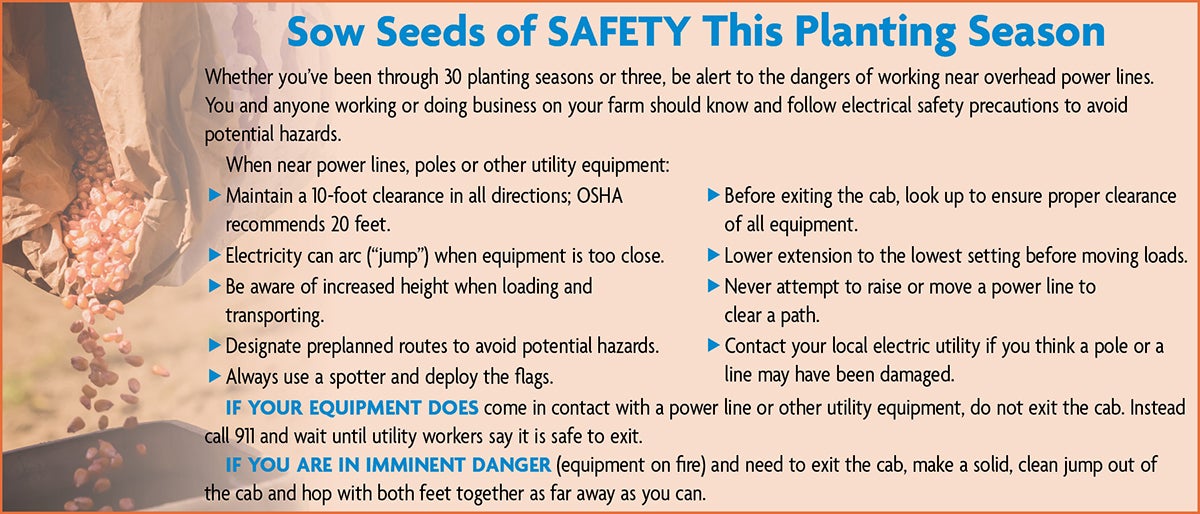Reap What You Sow: Stay Safe During Planting Season
Long hours and fatigue are a constant battle for farmers during planting season. If you farm, remember to take care of yourself by getting as much rest as possible and allowing yourself breaks to clear your head.
Be especially aware of electrical hazards around the farm. Be cautious and think twice before acting around electricity. Safe Electricity offers farmers the following reminders:
- If your machinery or vehicle comes in contact with a power line, do not get out. Once contact has been made with a live line (even when your tractor or truck makes contact), you are now a “pathway to ground” and you could get electrocuted if you step out. Instead, stay where you are and call 911 to dispatch the appropriate utility to de-energize the power.
- If you come across an accident or incident near a downed power line, alert individuals (from a distance) to stay in the tractor or vehicle as long as there is no imminent danger. Do not approach the scene.
- When using machinery with long extensions or tall antennas and when using ladders, look up to avoid contact with overhead power lines.
- Even if there is no contact, an electrical current can jump or arc so keep equipment at least 10 feet from surrounding power lines at all times. (OSHA recommends a distance of 20 feet.)
- Remember, non-metallic materials (such as tree limbs, ropes and hay) can conduct electricity, depending on dampness and dust/dirt accumulation.
- Visually inspect overhead lines, which may not meet current height codes due to age or pole damage. If a wire is hanging low or is on the ground, consider it energized and stay at least 50 feet away; call 911 to have the operator dispatch the utility.
- Every day, map out where equipment will be moved to ensure it will clear power lines.
- When working in the vicinity of power lines, always use a spotter who has a broad vantage point.
Train anyone working with or for you (including seasonal employees) to be aware of power line locations and teach them proper clearance distance.

